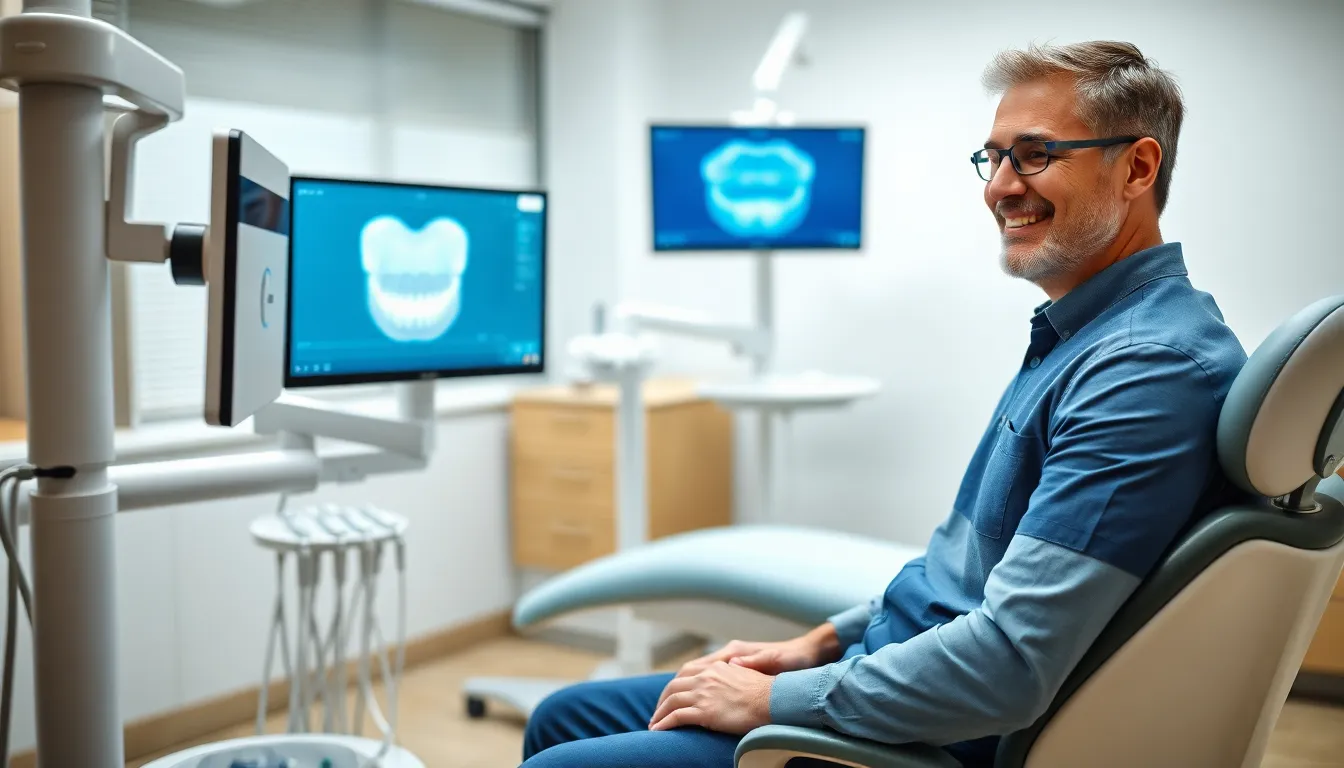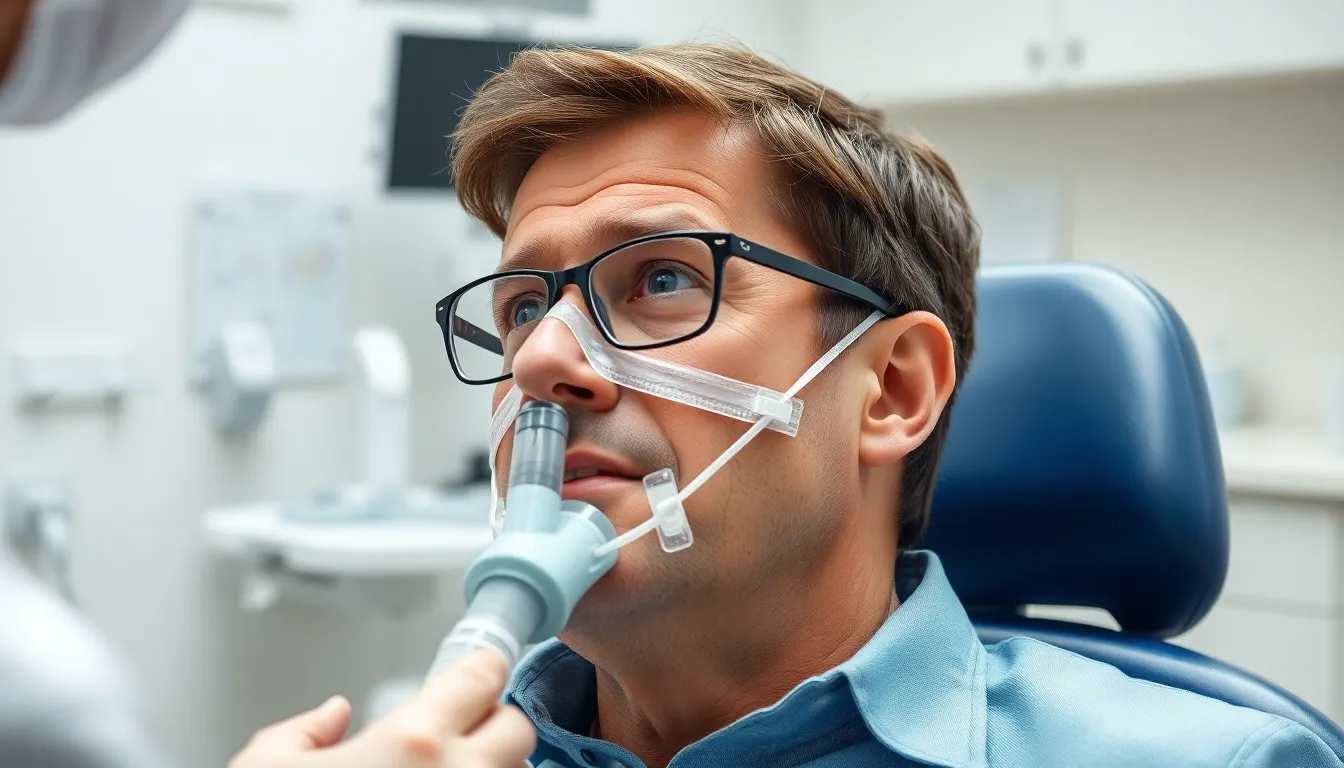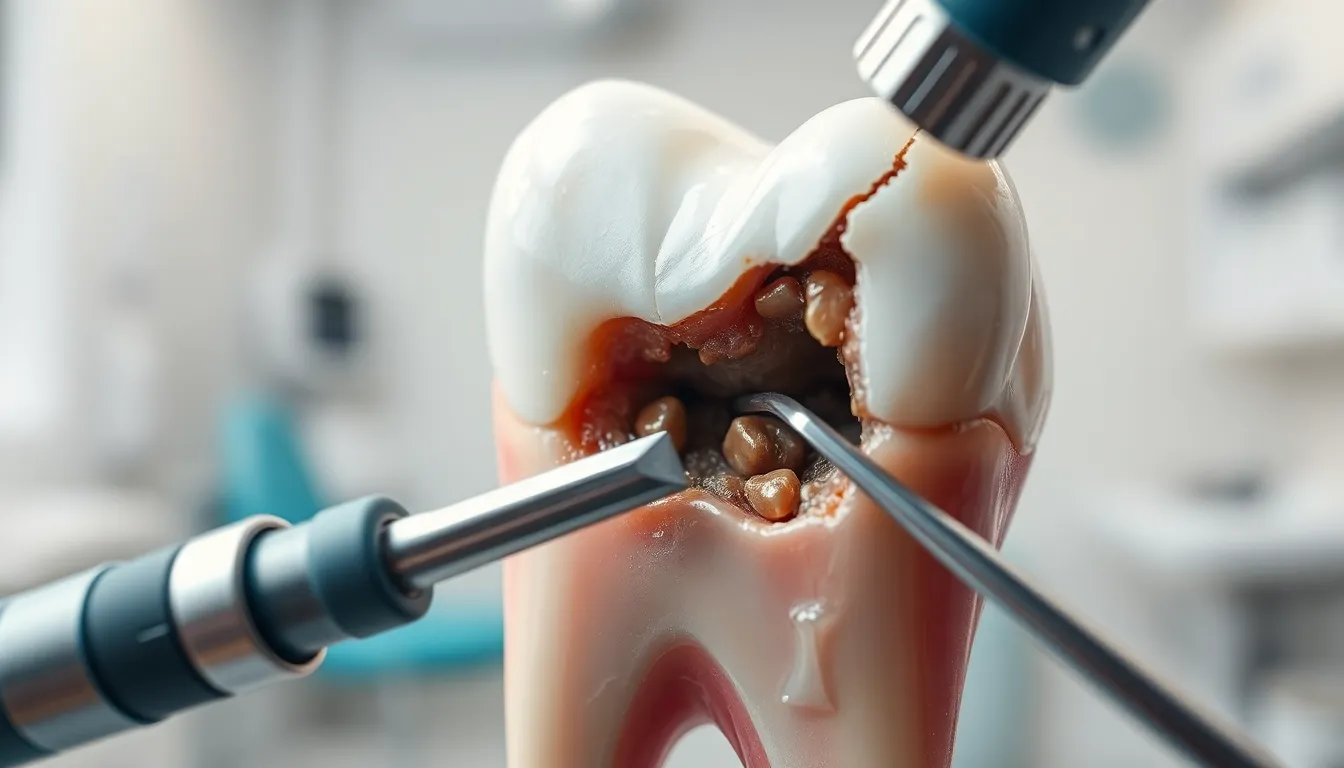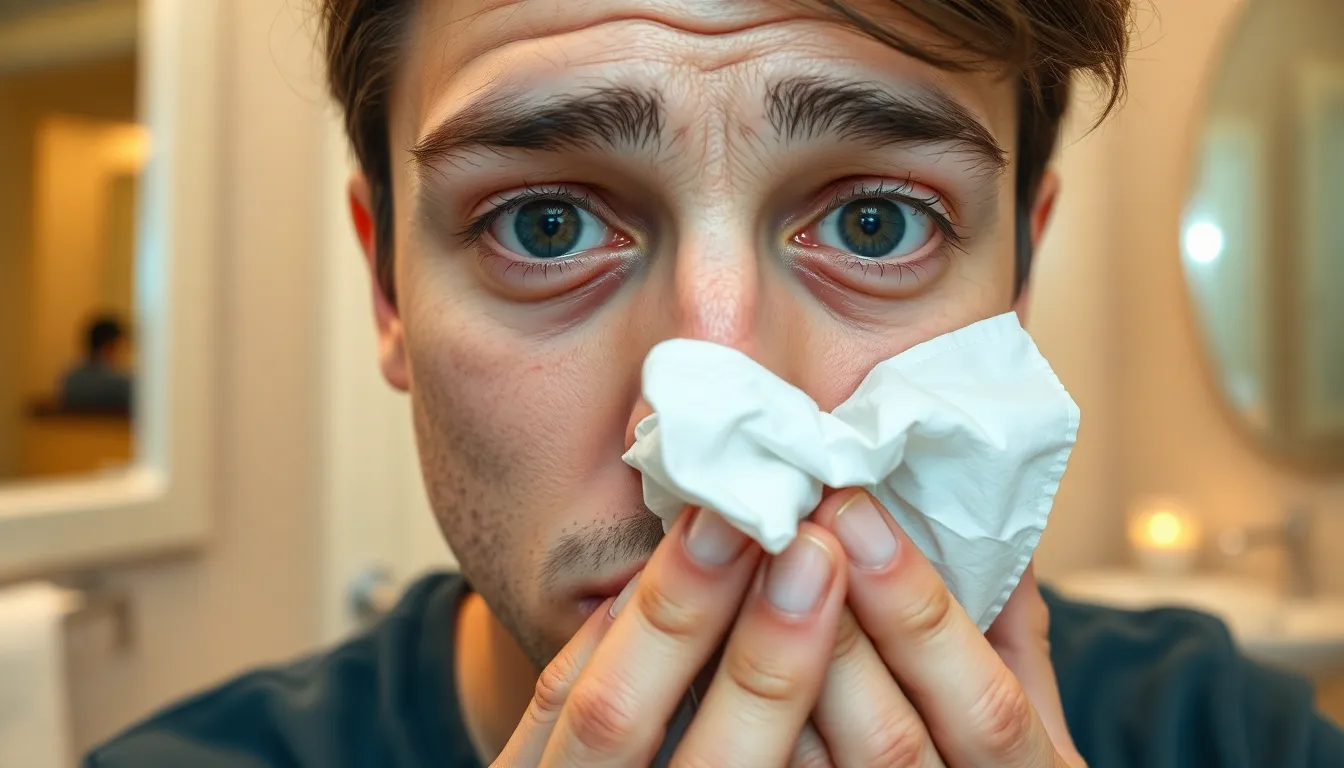Tired of temporary teeth whitening answers that fade after a few days? Permanent teeth bleaching offers a long-lasting alternative that can transform your smile for years, not just weeks.
Are you ready to say goodbye to discolored teeth and hello to a brighter, more confident smile? Permanent teeth bleaching treatments go beyond surface-level whitening by penetrating deep into your enamel to remove stubborn stains caused by coffee, wine, tobacco, and aging. Unlike over-the-counter options, professional permanent bleaching procedures performed by dental professionals provide dramatic, long-lasting results that can boost your self-confidence in both personal and professional settings.
What Is Permanent Teeth Bleaching?
Permanent teeth bleaching refers to professional dental procedures that provide long-lasting whitening results rather than temporary answers. Unlike over-the-counter products that offer short-term results, professional treatments penetrate deeper into tooth enamel to remove stubborn stains and discoloration. These procedures typically involve stronger bleaching agents applied under dental supervision for maximum effectiveness and safety.
Dr. Todd B. Harris explains, “Many patients come to me frustrated after trying countless whitening strips and toothpastes with minimal results. Permanent bleaching treatments target the intrinsic stains below the surface that store-bought products simply can’t reach.”
Sarah, a marketing executive who struggled with coffee-stained teeth for years, shared her experience: “After my permanent bleaching treatment, I stopped worrying about my smile during client presentations. Three years later, with occasional maintenance, my teeth still look dramatically whiter than before.”
Professional bleaching options include in-office treatments using high-concentration hydrogen peroxide gels activated by special lights or lasers. Custom-fitted trays with professional-grade whitening agents for at-home use represent another effective approach. Both methods deliver results that last significantly longer than conventional whitening products, though they’re not technically “permanent” as maintenance sessions are eventually needed.
Dental professionals customize permanent bleaching treatments based on your exact needs, considering factors like tooth sensitivity, existing dental work, and desired whiteness level. The procedure addresses various types of discoloration from coffee, tea, red wine, tobacco use, aging, and even some medication-related stains that resist standard whitening methods.
Types of Professional Permanent Teeth Bleaching
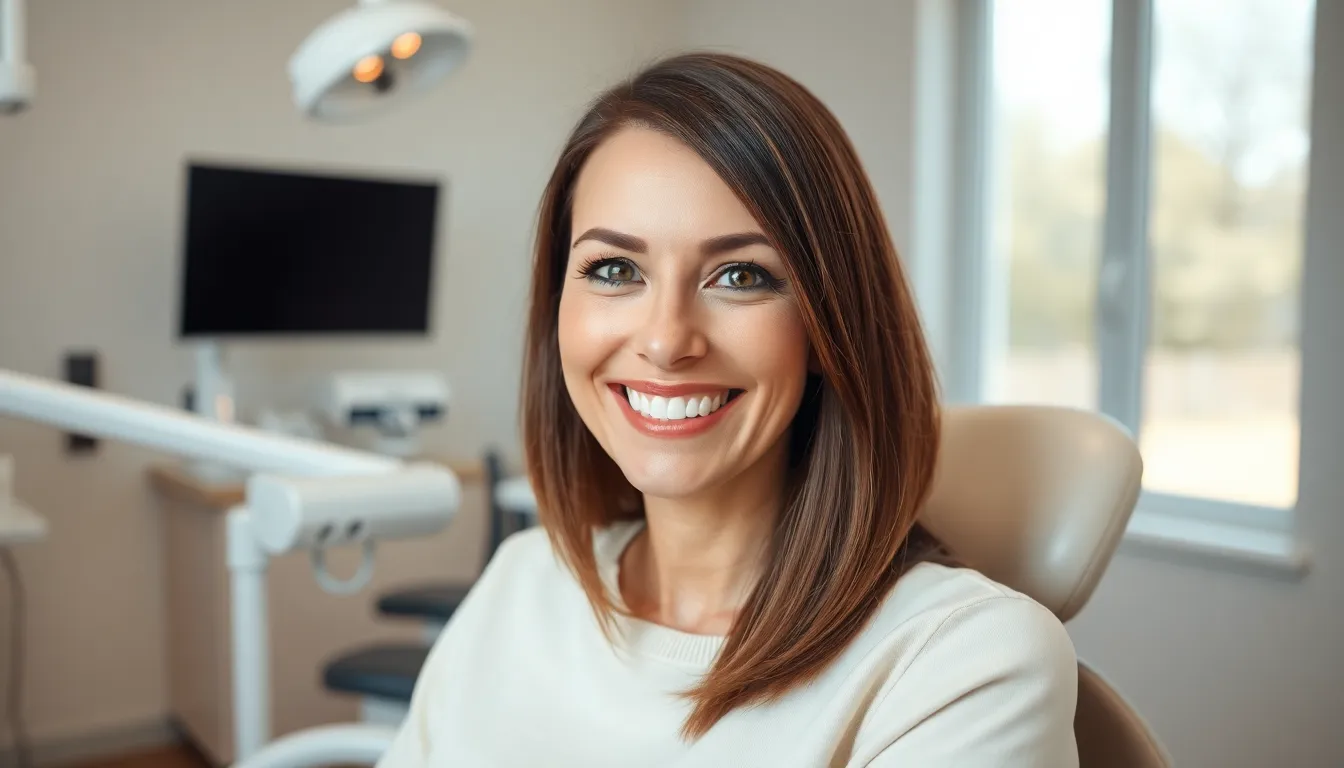
Professional permanent teeth bleaching treatments come in two main forms, each offering distinct advantages depending on your preferences and lifestyle. These dentist-supervised options deliver superior results compared to over-the-counter alternatives, with longer-lasting effects and better stain removal capabilities.
In-Office Laser Whitening
In-office laser whitening delivers immediate, dramatic results in a single dental visit. During this procedure, your dentist applies a high-concentration hydrogen peroxide solution (typically 25-40%) to your teeth, then activates it using a specialized laser or light. The entire treatment takes approximately 45 minutes and can brighten your smile by several shades in just one session. Many patients like Jennifer, a 42-year-old teacher, choose this option when they need quick results for special occasions. “I had my daughter’s wedding coming up in two weeks, and the laser treatment transformed my smile completely. The photos turned out amazing, and I felt so confident,” she shares. Dr. Todd B. Harris notes that laser whitening is particularly effective for patients with deep-set stains from decades of coffee consumption or tobacco use. The professional supervision ensures safety for those with sensitive teeth, though multiple sessions might be recommended for optimal results.
Take-Home Professional Kits
Take-home professional kits provide gradual yet effective whitening in the comfort of your home. Your dentist creates custom-fitted trays specifically molded to your teeth and provides professional-grade whitening gel with a lower concentration of peroxide than in-office treatments. You’ll wear these trays for several hours daily over a period of days or weeks, depending on your whitening goals. The personalized approach makes these kits significantly more effective than generic store-bought options. Mark, a business executive who travels frequently, found this option perfectly suited his lifestyle. “The custom trays let me whiten on my own schedule, even during business trips. After three weeks of consistent use, my teeth were noticeably whiter, and the results have lasted for over a year with occasional touch-ups,” he reports. Dr. Harris recommends take-home kits for patients seeking more affordable options who don’t mind the gradual process, or as maintenance following in-office treatments to extend their results.
| Feature | In-Office Laser Whitening | Take-Home Professional Kits |
|---|---|---|
| Treatment Location | Dental office | Home |
| Whitening Agent | High concentration hydrogen peroxide (25-40%) | Lower concentration peroxide |
| Session Duration | About 45 minutes per session | Several hours daily |
| Treatment Period | Single visit (multiple for enhanced results) | Days or weeks of consistent use |
| Results Timeline | Immediate and dramatic | Gradual but effective |
| Safety | Dentist supervised | Dentist prescribed, safer than OTC |
| Cost | Higher upfront investment | More affordable long-term option |
Over-the-Counter Permanent Teeth Bleaching Options
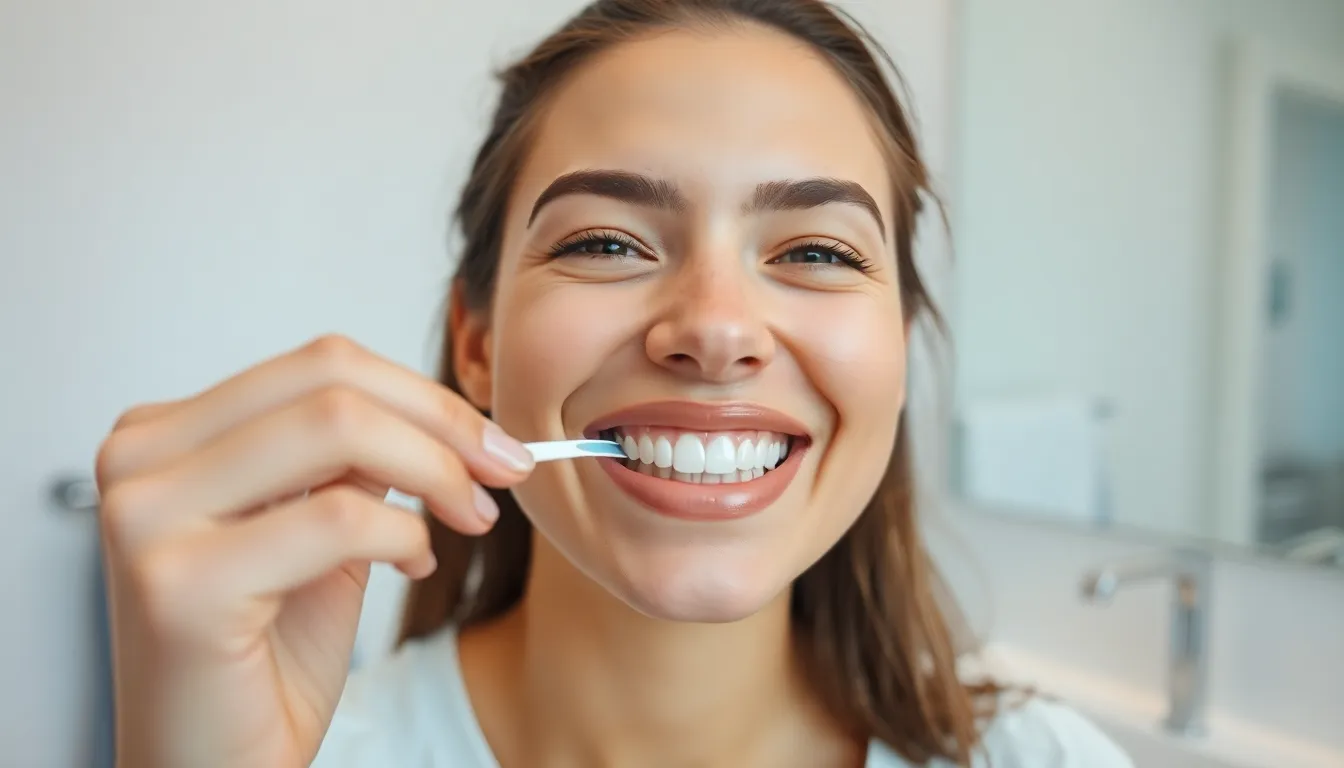
For those seeking teeth whitening answers without visiting a dentist, several over-the-counter options are available. These products vary significantly in effectiveness, concentration of active ingredients, and application methods.
Whitening Strips and Gels
Whitening strips represent the most effective over-the-counter bleaching method currently available. These thin plastic strips contain 5-15% hydrogen peroxide and adhere directly to teeth for 5-60 minutes daily over a two-week period. Clinical research demonstrates that quality whitening strips can achieve results comparable to professional at-home bleaching with custom trays. Their effectiveness stems from prolonged contact with tooth enamel and relatively higher peroxide concentrations than other OTC products.
“Many of my patients who can’t fit in-office treatments into their schedule have seen impressive results with premium whitening strips,” notes Dr. Todd B. Harris. “They’re particularly effective for maintenance between professional treatments.”
Whitening gels paired with trays offer another potent option, sometimes producing visible results within days. These gels typically contain carbamide peroxide or hydrogen peroxide in higher concentrations than standard OTC products, creating more rapid whitening effects. Mark, a 35-year-old teacher, shared: “After trying various whitening products for years, I finally found success with a tray-based gel system. My coffee stains faded noticeably after just one week of consistent use.”
Whitening Toothpastes and Mouthwashes
Whitening toothpastes work differently from peroxide-based products by primarily removing surface stains through mild abrasives and chemical agents. They don’t actually bleach teeth in the way strips or gels do. Results from whitening toothpastes appear more gradually and are less dramatic than peroxide treatments. These products work best for maintaining whiteness after using more intensive treatments or addressing minor discoloration.
Mouthwashes containing whitening agents provide another convenient option for daily use. They typically contain low concentrations of hydrogen peroxide that can help gradually brighten teeth over time. But, their effectiveness falls significantly below that of strips or gels due to the brief contact time with teeth during rinsing.
Dr. Harris emphasizes that “whitening toothpastes and mouthwashes serve as excellent maintenance products but rarely produce the dramatic results patients expect when used alone. Their value lies in preserving results achieved through more intensive treatments.”
For noticeable bleaching effects, products containing adequate peroxide concentrations with sufficient contact time deliver the most important improvements. While OTC options can produce meaningful whitening, they generally require consistent use and periodic touch-ups to maintain results, unlike professional treatments that can lighten teeth by up to 16 shades with effects lasting from six months to three years.
The Science Behind Teeth Bleaching
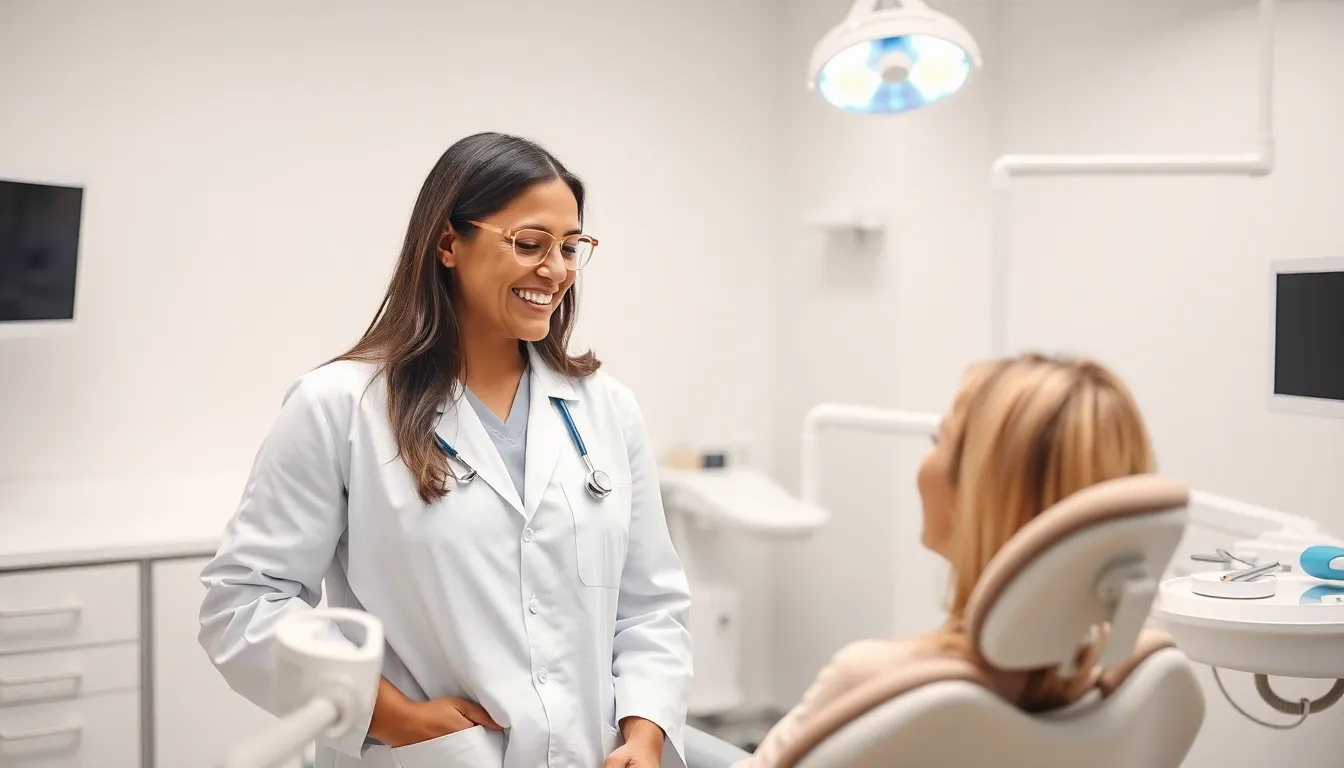
Teeth bleaching involves a complex chemical process that transforms your smile by breaking down stain molecules embedded within tooth structure. Understanding the science behind this transformation helps explain why professional treatments deliver superior results compared to temporary answers.
Your teeth consist primarily of two layers: the hard outer enamel and the underlying porous dentin layer. Discoloration occurs when stain molecules penetrate these layers from sources like coffee, wine, smoking, certain medications, or natural aging. Professional bleaching effectively targets both extrinsic (surface) and intrinsic (internal) stains through a chemical reaction that alters these molecules and reduces their color intensity.
How Bleaching Agents Work
Dental professionals rely on two primary bleaching agents: hydrogen peroxide (H₂O₂) and carbamide peroxide (CH₆N₂O₃). These compounds work through a sophisticated oxidation process that breaks down stubborn stains. Carbamide peroxide converts into hydrogen peroxide upon contact with water in your mouth, releasing the active whitening ingredient.
The whitening process follows four key steps:
- Penetration: Bleaching agents diffuse through your enamel and into dentin via microscopic spaces between enamel prisms
- Oxidation: Hydrogen peroxide releases highly reactive oxygen free radicals once inside the tooth structure
- Breaking Down Stains: These free radicals attack double bonds in colored stain molecules (chromophores), fragmenting their molecular chains
- Visual Result: The complex stain molecules become smaller and less colored, improving light reflection and creating a whiter appearance
Dr. Harris explains, “The chemical reaction typically begins within 15 minutes of applying the bleaching agent. Higher concentrations used in our professional treatments penetrate more effectively than over-the-counter products, which is why patients see such dramatic differences in results.”
Longevity of Results
The durability of your whitening results varies significantly based on the treatment method and your lifestyle habits. Professional treatments deliver more substantial and longer-lasting effects compared to retail products.
| Treatment Type | Typical Shade Improvement | Expected Duration |
|---|---|---|
| Over-the-counter products | 1-2 shades | 3-6 months |
| Professional take-home kits | 4-8 shades | 6-12 months |
| In-office bleaching | 8-16 shades | 1-3 years |
Monica, a longtime patient of Dr. Harris, shares, “After my professional bleaching treatment three years ago, I’ve maintained my results with just two touch-up sessions. The difference compared to the strips I used before is remarkable—both in how white my teeth became and how long the results have lasted.”
Your lifestyle significantly impacts longevity—consuming staining foods and beverages like red wine, coffee, and berries can accelerate discoloration. Smoking also dramatically reduces the duration of whitening effects. Maintaining excellent oral hygiene through regular brushing, flossing, and professional cleanings helps preserve your brighter smile for extended periods.
Benefits of Permanent Teeth Bleaching

Professional teeth bleaching offers long-lasting results that can persist for up to four years without special maintenance. Unlike over-the-counter products that require constant reapplication, a single professional treatment provides extended whitening benefits. Many patients find this longevity particularly valuable, as Dr. Todd B. Harris notes, “My patients appreciate not having to think about whitening treatments every few weeks.”
Permanent bleaching proves cost-effective even though its higher initial investment. You’ll save money over time by avoiding repeated purchases of home whitening products. Sarah, a finance director who opted for professional bleaching three years ago, shares: “I’ve actually spent less on my teeth since getting professional bleaching than I did buying new whitening strips every month.”
Your oral health improves with professional bleaching treatments. The process eliminates harmful bacteria, plaque, and tartar buildup along with stains on the outer tooth layer. This comprehensive cleaning reduces gum disease and tooth decay risks, contributing to better overall dental health.
Self-confidence increases dramatically following permanent teeth bleaching. People who undergo professional whitening smile more freely and engage more comfortably in social situations. Many patients report feeling years younger after treatment, with professional whitening capable of removing deep discoloration that home remedies can’t touch.
Cosmetic benefits extend beyond simple whitening with certain permanent bleaching procedures. Some treatments help close small gaps between teeth and lengthen the visible crown, offering additional aesthetic improvements. These supplementary benefits make professional bleaching a comprehensive solution for those seeking complete smile enhancement.
| Benefit | Professional Bleaching | OTC Products |
|---|---|---|
| Duration of results | Up to 4 years | Weeks to months |
| Oral health impact | Removes bacteria, plaque & tartar | Limited to surface cleaning |
| Whitening potential | Up to 16 shades lighter | 2-3 shades lighter |
| Additional cosmetic benefits | Can help close gaps & lengthen crown | None |
Potential Risks and Side Effects
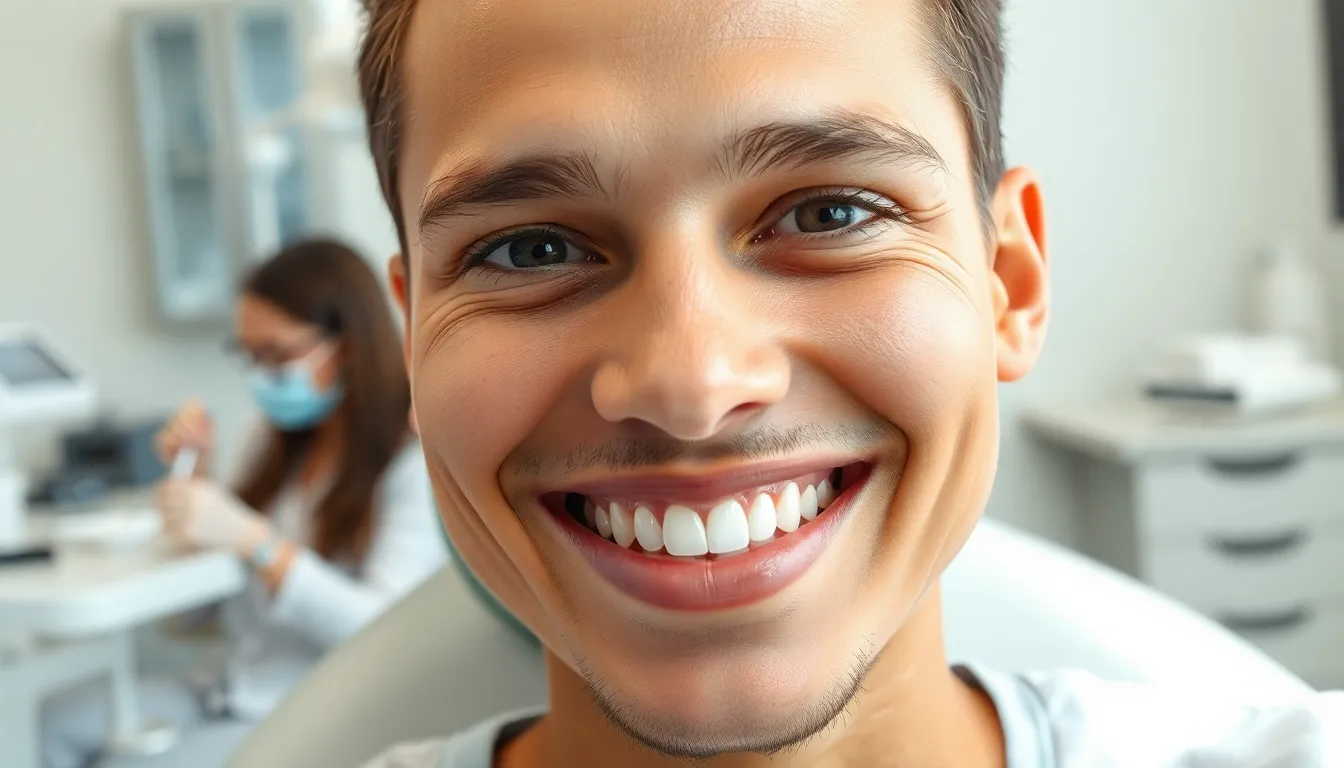
While permanent teeth bleaching offers impressive whitening results, it’s important to understand the potential downsides before undergoing treatment. Professional bleaching procedures use powerful chemicals that can cause several adverse effects when not properly administered or monitored.
Tooth Sensitivity
Tooth sensitivity ranks as the most common side effect experienced during and after permanent teeth bleaching. Bleaching agents penetrate your tooth enamel to break down stains but simultaneously strip away essential minerals, weakening the protective layer and exposing the dentin beneath. This exposure creates heightened sensitivity to hot, cold, or sweet foods and beverages. Sensitivity ranges from mild discomfort that disappears within 24-48 hours to severe pain that persists for weeks in some cases. Patients with already sensitive teeth typically experience more intense reactions to bleaching treatments.
“Many of my patients are surprised by the sensitivity they feel after their first bleaching session,” explains Dr. Todd B. Harris. “I always recommend using a toothpaste formulated for sensitive teeth for at least two weeks before beginning any whitening treatment to minimize discomfort.”
Professional in-office procedures often incorporate desensitizing agents to reduce this risk. At-home whitening kits, particularly when overused, pose a greater threat of developing lasting sensitivity issues. Excessive bleaching—known as “overbleaching”—can lead to permanent sensitivity problems in rare but important cases.
Gum Irritation
Gum irritation occurs frequently when bleaching chemicals come into direct contact with your soft gum tissue. Contact between peroxide-based whitening agents and gums results in redness, swelling, discomfort, and sometimes chemical burns to the mucous membranes. This problem happens more commonly with at-home whitening kits where application techniques might be imprecise or trays fit poorly.
Sarah, a marketing executive who experienced important improvement in her smile after professional bleaching, shares: “During my first week using the take-home trays, I accidentally used too much gel and woke up with swollen, painful gums. My dentist advised me to take a three-day break and showed me how to apply the correct amount of product.”
Custom-fitted trays provided by dental professionals reduce the risk of gel contact with gum tissue. Persistent gum irritation following a bleaching session requires immediate dental consultation to prevent further damage. Professional supervision makes a substantial difference in minimizing this particular side effect compared to over-the-counter options.
Candidates for Permanent Teeth Bleaching
Perfect candidates for permanent teeth bleaching are typically healthy individuals who’ve reached at least 14 years of age with a full set of permanent teeth. Your oral health plays a crucial role in determining eligibility, as patients need healthy gums without active gum disease or infections before proceeding with whitening treatments. Teeth with yellow discoloration due to aging, food, drinks, or tobacco use respond most effectively to bleaching procedures, while brown stains generally show good improvement as well.
“Many patients come to me wondering if they’re good candidates for permanent teeth bleaching,” says Dr. Todd B. Harris. “I always explain that the best results come from those with healthy teeth that have external staining rather than intrinsic issues. One of my patients, Michael, had been self-conscious about his yellow teeth for years after decades of coffee drinking. After confirming his excellent oral health, we proceeded with treatment that lightened his teeth by seven shades, dramatically boosting his confidence in professional settings.”
Dental restorations present important considerations for treatment eligibility. Existing dental work such as crowns, veneers, bonding, or caps in your front teeth may make you a poor candidate since bleaching agents don’t change the color of these materials, potentially creating an uneven appearance. Teeth sensitivity might also impact your candidacy, as some patients experience temporary discomfort during the bleaching process.
Age restrictions apply primarily to ensure complete dental development. Most dentists recommend waiting until at least 14 years old when permanent teeth have fully erupted. Women who are pregnant or breastfeeding are typically advised to postpone teeth bleaching as a precautionary measure.
Your expectations about outcomes matter significantly when considering permanent teeth bleaching. Professional treatments can effectively lighten teeth up to eight shades, with results typically lasting between 18-24 months depending on your oral hygiene practices and lifestyle habits.
A comprehensive dental examination including your medical history and current oral health status remains essential before undergoing any bleaching procedure. Dentists often recommend professional cleaning or using whitening toothpaste initially to address surface stains before proceeding with more intensive bleaching treatments.
Cost of Professional Teeth Bleaching
Professional teeth bleaching costs vary significantly based on the exact treatment method you choose, your geographic location, and your dentist’s expertise. In-office whitening procedures typically range from $300 to $1,000, offering the most dramatic results in the shortest time frame. Light-accelerated whitening treatments cost between $400 and $1,000, while popular Zoom whitening ranges from $350 to $1,000 per session.
Advanced laser whitening sits at the higher end of the spectrum, priced between $600 and $1,000, delivering exceptional results for patients with severe staining. Custom tray whitening systems are more affordable at $350 to $500, providing professional-grade results with the convenience of at-home application. For patients with individual discolored teeth, internal bleaching costs approximately $250 to $500 per tooth.
“Many of my patients are surprised by the range of options available,” says Dr. Todd B. Harris. “I’ve found that while the initial investment might seem substantial compared to drugstore products, my patients eventually save money by avoiding the cycle of disappointing over-the-counter products that never quite deliver the results they’re looking for.”
Take-home kits prescribed by dentists offer a middle-ground solution, priced between $100 and $600. These professional-grade systems include custom-fitted trays and higher-concentration bleaching agents than what’s available over the counter. Over-the-counter whitening products cost substantially less, ranging from $5 for basic whitening toothpaste to $400 for premium LED whitening systems, though their effectiveness is considerably lower than professional treatments.
Regional pricing differences exist across the country, with dental practices in major metropolitan areas and coastal cities typically charging premium rates compared to rural locations. Dental professionals with specialized cosmetic dentistry credentials or extensive experience often command higher fees for their expertise and consistently superior results.
Jennifer, a 35-year-old teacher from Boston, shares her experience: “I initially balked at spending $800 for in-office whitening, but after wasting nearly $300 on various drugstore products over six months with minimal results, the professional treatment was worth every penny. Three years later, my smile still looks fantastic with just occasional maintenance treatments.”
Most dental offices require an initial consultation to assess your oral health before recommending a bleaching procedure, ensuring you’re an appropriate candidate for treatment and helping you select the most effective option for your exact situation and budget.
Maintaining Your Whitened Smile
After investing in permanent teeth bleaching, proper maintenance ensures your bright smile lasts as long as possible. Regular brushing and flossing form the foundation of preserving your whitening results by preventing new stains from accumulating on your freshly brightened teeth. Daily oral hygiene practices remove food particles and plaque that can contribute to discoloration over time.
Dietary Considerations
Your diet plays a crucial role in maintaining your whitened smile. Coffee, tea, red wine, and darkly pigmented foods can gradually diminish your whitening results. Reducing consumption of these staining substances helps preserve your bright smile for months longer. When you do enjoy these beverages, drinking through a straw minimizes contact with your front teeth.
“Many of my patients are surprised by how much longer their whitening results last when they make simple dietary adjustments,” says Dr. Todd B. Harris. “One patient, Michael, maintained his professional whitening results for over two years by switching to white wine instead of red and using a straw for his morning coffee.”
Touch-Up Treatments
Periodic maintenance keeps your smile looking its best long after initial treatment. Monthly use of custom trays with whitening gel effectively combats new stains before they become stubborn. The KöR Whitening System, which combines at-home and in-office treatments, has shown remarkable longevity with results lasting from six months to three years when supported by regular maintenance sessions.
Professional Maintenance
Scheduling regular dental cleanings every six months removes surface stains that accumulate between visits. Professional cleanings complement your at-home maintenance routine and allow your dentist to monitor the condition of your whitened teeth. Your dentist might recommend occasional professional touch-up treatments to refresh your smile, especially if you’ve noticed some regression in whiteness.
Products for Whiteness Preservation
Whitening toothpastes and rinses serve as excellent maintenance tools between more intensive treatments. These products contain mild abrasives and polishing agents that remove surface stains before they penetrate deeper into the enamel. Specialized whitening pens provide targeted touch-ups for areas showing early signs of discoloration, extending the life of your professional treatment.
Conclusion
Permanent teeth bleaching offers a groundbreaking solution for those seeking long-lasting smile enhancement beyond what temporary products can provide. By choosing professional treatments you’ll not only achieve more dramatic whitening results but also potentially improve your overall oral health.
Whether you opt for in-office laser treatments or professional take-home kits the investment delivers value through extended results and reduced need for frequent touch-ups. With proper maintenance including good oral hygiene and mindful dietary choices your brighter smile can last for years.
Remember that consulting with a dental professional is essential to determine your candidacy and create a customized treatment plan. With realistic expectations and appropriate aftercare you’ll enjoy the confidence boost that comes with a radiant smile for much longer than conventional whitening methods allow.
Frequently Asked Questions
What is permanent teeth bleaching?
Permanent teeth bleaching refers to professional dental procedures that provide long-lasting whitening results by penetrating deep into tooth enamel. These treatments use stronger bleaching agents under dental supervision to remove stubborn stains that over-the-counter products can’t reach. While not truly “permanent,” these professional treatments deliver results that can last for years with occasional maintenance.
How does professional teeth bleaching differ from over-the-counter options?
Professional teeth bleaching uses higher-concentration whitening agents (up to 40% hydrogen peroxide) compared to OTC products (5-15%). Dentist-supervised treatments penetrate deeper to remove intrinsic stains, can lighten teeth by up to 16 shades, and last 6 months to 3 years. OTC options primarily target surface stains, require consistent use, and deliver more modest results that fade more quickly.
What types of professional teeth bleaching are available?
There are two main types: in-office laser whitening and take-home professional kits. In-office treatments use high-concentration hydrogen peroxide activated by a laser for immediate, dramatic results in a single visit. Take-home kits use custom-fitted trays with lower-concentration peroxide for gradual whitening at your convenience. Both are more effective than OTC products.
How long do teeth bleaching results last?
Results typically last 6 months to 3 years depending on the treatment type and lifestyle factors. Professional in-office treatments generally last longer (1-3 years) than take-home kits (6-12 months) or OTC products (3-6 months). Consuming staining foods/beverages, smoking, and poor oral hygiene can significantly reduce longevity, while maintenance treatments can extend results.
Are there any side effects of teeth bleaching?
The most common side effects are temporary tooth sensitivity and gum irritation. Sensitivity occurs when bleaching agents strip minerals from tooth enamel, causing discomfort with temperature changes and sweet foods. Gum irritation happens when bleaching agents contact soft tissue, resulting in redness and swelling. Using desensitizing toothpaste before treatment and properly fitted trays can minimize these effects.
Who is an ideal candidate for permanent teeth bleaching?
Ideal candidates are healthy individuals aged 14+ with a full set of permanent teeth and good oral health. Yellow discoloration from aging, food, drinks, or tobacco responds best to bleaching. Those with extensive dental restorations may see uneven results as crowns and veneers don’t change color. Pregnant or breastfeeding women should postpone treatment. A dental exam is recommended before proceeding.
How much does professional teeth bleaching cost?
Professional teeth bleaching costs vary by treatment type, location, and dentist expertise. In-office whitening typically ranges from $300-$1,000, with advanced laser treatments at the higher end. Custom tray systems cost $350-$500, while dentist-prescribed take-home kits run $100-$600. Most dental offices require an initial consultation to assess oral health and recommend the most suitable option.
How do I maintain my teeth after bleaching?
Maintain your whitened smile by brushing and flossing regularly, limiting consumption of staining foods and beverages (coffee, red wine, tea), using straws when drinking dark liquids, and avoiding tobacco products. Schedule periodic touch-up treatments with custom trays, use whitening toothpaste for maintenance, and get regular dental cleanings. These simple habits significantly extend the longevity of your whitening results.


